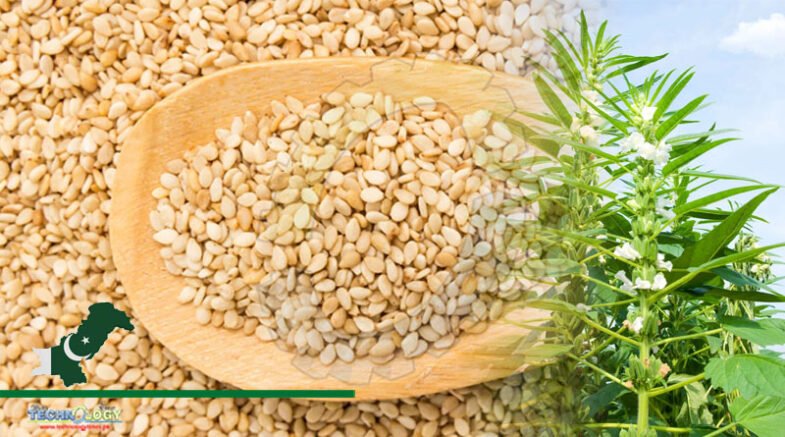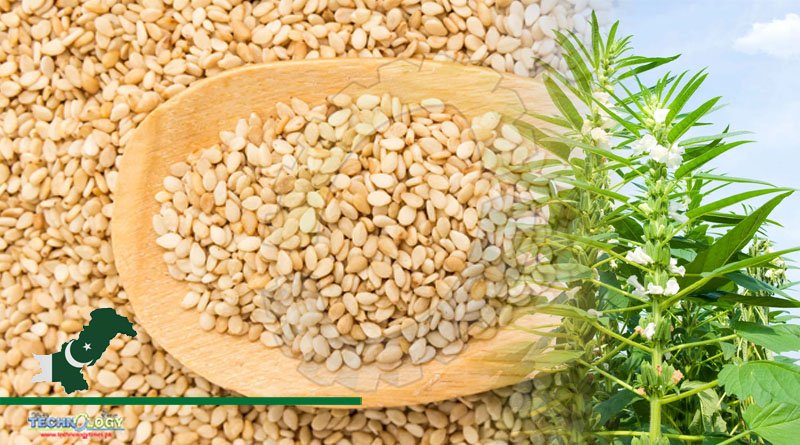Pakistan’s sesame exports to China increased 46% in the first half of this year as agricultural cooperation between the sesame scientist of the two countries is growing.

A group of Chinese and Pakistani sesame scientist have selected and exchanged seeds for crop breeding, cooperation in sesame planting and harvesting is in the pipeline under the CPEC framework.
“Sesame seeds selected by Ayub Agriculture Research Institute (AARI) in Faisalabad will be tested in Hai Nan, China in November. Last month, researchers and farmers from Pakistan gave a detailed outlook of sesame industry during an online seminar hosted by China Machinery Engineering Corporation (CMEC) and AARI,” Xu Guizhen, Director of Sesame Research Office, Hebei Academy of Agriculture and Forestry Science, told China Economic Net (CEN).
“Our institute is confident about finding solutions to the breeding of new sesame varieties, research in cultivation technology and lab-to-market transformation for our ‘iron brother’.”
Sesame has a long planting history in Pakistan. The crop is not hard to grow, requires not much water and fertiliser, yet farmers seem to be hesitant about planting sesame. “The biggest difficulty is finding labourers. Harvesting and planting have to be done by hand here,” Chaudhary Abdul Razzaq, a Pakistani sesame farmer, told CEN.
“If farmers can’t find skillful labourers, matured sesame seeds will fall off. This year, almost all of my sesame seeds have fallen off.”
The Pakistani team was particularly interested in mechanical means to harvest sesame seeds, Xu revealed.
Sesame seeds are protected by a capsule before they mature, and the time for each capsule to dehiscence is different. Thus, traditionally, farmers cut the crops by hand and set them in an upright position for the seeds to ripe and capsules to pop.
“We have successfully developed a type of sesame germplasm called ‘definite inflorescence sesame germplasm’. Compared with other types of sesame, this type of sesame is shorter and diseases resistant. Its capsules normally all pop at the same time and can be harvested by machine.” Xu said.
“There is another one that we’ve created called ‘dehiscence resistant sesame germplasm’. When this type of sesame crops ripe, only the tip of the capsule pops and the sesame seeds stay inside of the capsule, which means it can be harvested completely by mechanical means. The Pakistani team was satisfied with the results.”
China, although being a major producer of sesame, its ever-growing market demand for the crop was rarely fulfilled. Different from Pakistan, Chinese take sesame seeds as an essential ingredient in daily meals.
In 2021, China’s demand for sesame seeds is 1.58 million tons and has imported 1.18 million tons. Freight costs raised concerns for Chinese traders. “Under China Pakistan Economic Corridor, Pakistan has become an ideal exporter to China due to its ports and land routes advantages. We are willing to provide technical supports and market experiences to Pakistani farmers, a win-win opportunity is ahead of us.” Xu concluded.
